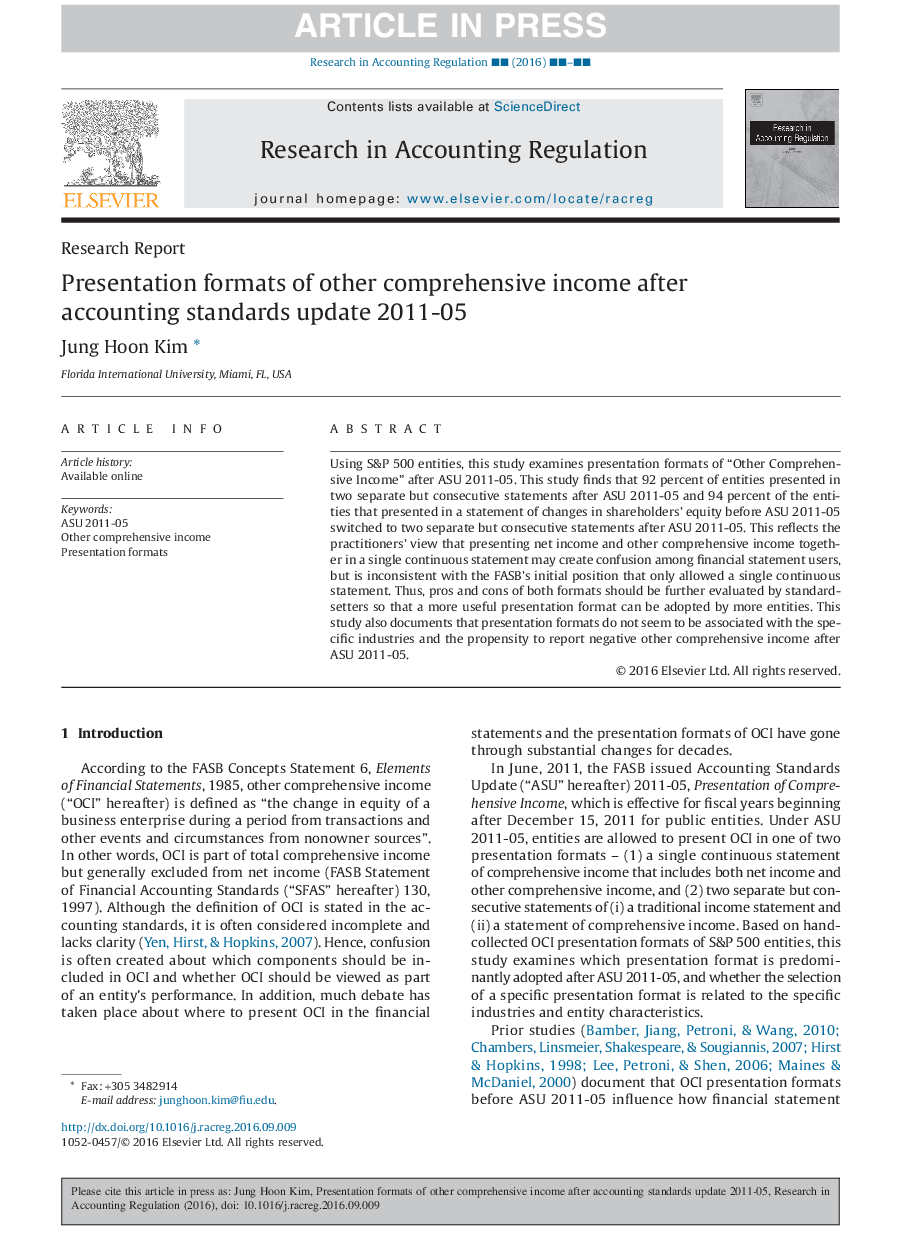| Article ID | Journal | Published Year | Pages | File Type |
|---|---|---|---|---|
| 5107812 | Research in Accounting Regulation | 2016 | 5 Pages |
Abstract
Using S&P 500 entities, this study examines presentation formats of “Other Comprehensive Income” after ASU 2011-05. This study finds that 92 percent of entities presented in two separate but consecutive statements after ASU 2011-05 and 94 percent of the entities that presented in a statement of changes in shareholders' equity before ASU 2011-05 switched to two separate but consecutive statements after ASU 2011-05. This reflects the practitioners' view that presenting net income and other comprehensive income together in a single continuous statement may create confusion among financial statement users, but is inconsistent with the FASB's initial position that only allowed a single continuous statement. Thus, pros and cons of both formats should be further evaluated by standard-setters so that a more useful presentation format can be adopted by more entities. This study also documents that presentation formats do not seem to be associated with the specific industries and the propensity to report negative other comprehensive income after ASU 2011-05.
Keywords
Related Topics
Social Sciences and Humanities
Business, Management and Accounting
Accounting
Authors
Jung Hoon Kim,
